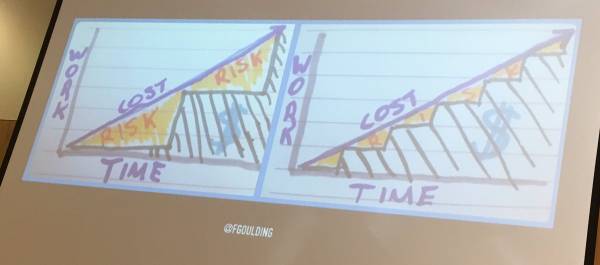About
Continuous deployment reflects the habit of deploying new code as a series of small changes as soon as they are ready.
Continuous deployment is also known as:
- Continuous development
- Continuous Delivery platform
Continuous deployment is typically performed with snapshot versions.
Continuous Deployment follows your tests (continuous integration ) to push your changes to either a staging or production system.
See also: Code Shipping - Workflow (Agile, MVP, Scrum, Waterflow, Kanban)
Articles Related
(Development|Deployment) Cycle
There is still a distinction between code in development and code that is ready to be deployed. Developers use a version control system (git,…) for their daily work, until the code is ready to push.
The stable version for deployment is maintained in a branch. When ready to be pushed, new code must first be merged with the stable version in the centralized repository, after which engineers can commit their changes.
Some of the factors going into the determination of the optimal deployment cycle are:
- the cost of each deployment,
- the probability and cost of errors,
- the probability and value of incremental benefits,
- the skill of the engineers involved,
- and the culture of the organization.
Adding to the complexity of the decision is that many of these factors can be optimized, so the optimal cycle can change.
Feature with large changes to the codebase
Ostensibly, rapid deployment is at odds with feature development that requires large changes to the codebase. The solution is to break down such changes into a sequence of smaller and safer ones, hidden behind an abstraction.
Attribute
Immediatly availabe to a a small subset of users
Deploying new code does not necessarily imply that it is immediately available to users. Facebook uses a tool called “Gatekeeper” to control which users see which features of the code. Thus it is possible for engineers to incrementally deploy and test partial implementations of a new service without exposing them to end users.
A/B testing: Live experimentation
An important attribute of continuous deployment is that it facilitates live experimentation using A/B testing. The innovations that engineers implement are deployed immediately for real users to experience.
A/B testing is an experimental approach to finding what users want, rather than trying to elicit requirements in advance and writing specifications.
This enables a careful comparison of the new features with the base case (that is, the current site) in terms of their effect on user behavior [5].
While this typically involves only a small subset of users, at Facebook’s volume of activity even a very small subset quickly generates enough data to assess the impact of the tested features. Thus engineers can immediately identify what works in practice and what does not.
Reduces the risk
Frequent deployments imply that each deployment introduces only a limited amount of new code. This reduces (but doesn’t eliminate) the risk that something will go wrong.
All commits are individually tested for regressions.
Easily identify the source and solutions of problems
Another benefit of small and rapid deployments is that we can easily identify the source of and solutions to emerging problems: they’re most likely the most recently deployed changes in the code, and still fresh in engineers’ minds.
No long-lived branches to merge
All front-end engineers at Facebook work on a single stable branch of the code, which also promotes rapid development, since no effort is spent on merging long-lived branches into the trunk.
Tools
Infra
Software
- Cruise Control
- Continuum
- Travis (Linux): config in .travis.yml
- https://www.appveyor.com/self-hosted/ - AppVeyor (Windows): config in appveyor.yml
- https://github.com/drone/drone - Based on Docker image ! - https://drone.io/enterprise/ - 5000 build per year free
- https://github.com/buildbot/buildbot/ - Buildbot (Arrow use it https://ci.ursalabs.org/)
